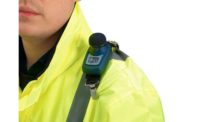We work with chemicals so often at home (bleach, WD-40, cleaners) that we sometimes forget the risk and regulations associated with them. Whether managing inventories to ensure that your company is ‘in compliance’ with all applicable laws and regulations, ensuring your employees are properly trained to handle hazardous chemicals, or avoiding that magically appearing chemical, managing onsite chemicals comes with huge environmental, health and safety risks.
Developing and managing a robust chemical management program can be exceedingly challenging, especially for companies with global footprints that need to comply with a patchwork of state/provincial and national laws.
A recent study of over 200 EHS professionals, EHS Embraces the Technology Revolution,1 found that 4/10 respondents are using a combination of Excel and homegrown solutions to manage and report on their programs, while 14 percent are shockingly still relying on paper-based systems. The truth is, spreadsheets, homegrown solutions, and paper just aren’t enough anymore to manage the complexities associated with the risks and compliance requirements for onsite chemicals.
Leveraging an off-the-shelf software solution can help companies centralize, standardize and streamline key aspects of their chemical safety program. While the need and risks vary by industry vertical and geography, chemical management should be at the top of every EHS department’s list of focus areas. Let’s look at three areas a chemical management solution can add value to your organization.
Unified chemical management
A unified chemical management solution2 has the power to support the unique work done by health, safety and environmental professionals. This includes:
- Safety Data Sheet (SDS) management
- Inventory management
- Emergency planning and response procedures
- Incident management
- Risk, exposure, process hazard, and job hazard assessments
- Hazard awareness
With a unified system, your EHS team has a single source of the truth to work from, which eliminates data and communication silos and helps minimize the risks of an accidental release that could be deadly.
Additionally, many leading solutions today also offer mobile applications to make the process of managing onsite chemicals even easier. With a mobile device, users can scan an RFID tag or barcode to quickly identify what chemical product is in the drum, update inventories, view the SDS in their native language, get instructions on how to properly handle the chemical, and much more.
Companies are increasingly looking to integrate wearables into their processes as the concept of the connected worker3 grows. These devices can be used to track fatigue, distractions, indoor atmosphere, body temperature, heart rate, pulse rate, and much more. This provides EHS teams with more data than ever before, and they can have it in seconds rather than days, weeks, or months. This can help them take proactive measures to prevent an incident or mitigate the extent of an incident by activating the emergency plan quickly.
Managing your training
It’s imperative that operations and maintenance teams properly understand the risks of working with chemicals, especially chemicals that are classified as highly hazardous substances. This includes providing training on: how to properly handle chemicals, proper PPE usage, and what to do if there is an accidental release. If employees aren’t properly trained, consequences can be deadly for employees, surrounding communities, and the environment.
With an off-the-shelf solution, your EHS staff can easily track which employees are due for training and ensure that they receive training in a timely manner.
Managing change of chemicals
Developing a robust management of change program for your chemical requests is fundamental. It’s not just enough to develop processes for ordering new chemicals or adding to existing inventories, your employees must be committed to adhering to them to minimize and mitigate compliance risks. Your EHS teams should review all chemical request in order to identify risks.
Determine what training or mitigation plans are needed before a chemical arrives onsite
Check onsite inventories for existing products to ensure that reporting is done if a reportable quantity limit is triggered or that the site isn’t exceeding threshold quantity limits.
Keys to success
It all starts with defining what your company’s goals are when it comes to chemical management. If you and your colleagues are unsure, ask yourself the following questions:
- How do employees access Safety Data Sheets (SDS) today?
- Is there value in enabling employees to view SDS’s on mobile device?
- How do we track inventories today? Is this data available in near real-time?
- Where are the gaps with our health and safety programs?
- Are we able to properly manage our risks associated with onsite chemical storage and usage?
Concluding remarks
Today, EHS professionals are faced with growing internal demands and an ever-changing regulatory landscape. Continuing to manage critical programs with spreadsheets, homegrown solutions, or paper is no longer sustainable. Unified EHS software solutions can support your programs and ensure employees have the required information to stay safe and help you build a best-in class chemical management program.
References
- https://go.cority.com/ehs-technology-revolution-report/
- https://www.cority.com/ehsq-software/environmental/chemical-management/
- https://ehsq.cority.com/webinars/the-connected-worker-engage-every-employee-for-a-safer-workplace



